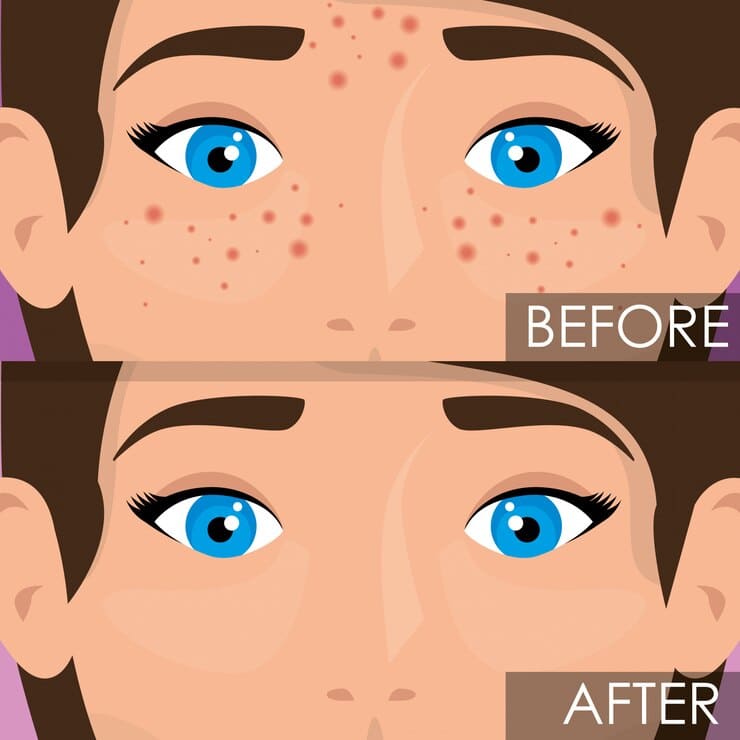What is Pigmentation?
It is the term used to describe changes in the colour of the skin. It could be dark patches called hyperpigmentation or light/pale patches called hypopigmentation.
There are many causes of hyperpigmentation, the common ones being:
- Simple tanning which causes generalised darkening of the skin 48 hrs after sun exposure.
- Ageing or maturational dyschromia, which is diffuse hyperpigmentation of the lateral forehead and cheekbones.
- Post-inflammatory hyperpigmentation, which is very common and noticeable in skin of colour, where any insult to the skin such as trauma, even mild such as constant rubbing, scratching, acne or pimples, eczema, psoriasis, cut or burn leaves a dark mark. This can last for months to years depending on your skin type.
- Melasma, which is dark brown or greyish brown patches typically on the mid cheeks, but can also appear on the forehead, the chin, and the jawline as well.
- Freckles or sun spots are light brown tiny patches on the face, and lentigines or age spots which are darker and slightly bigger patches, which develop more so after the age of 40.
Pigmentation on the upper lips (from lip licking, dry skin, hair removal methods, inflammation) around the eyes (dark circles) are very common which is a vast subject on its own.
There are less common causes such as:
- Riehls melanosis which is allergy to a skin product.
- Pigment demarcation lines which is physiological pigmentation (no cause) seen as light brown V or W shaped patches on the outer corners of your eyes, or linearly from the lip corners.
- Lichen planus pigmentosus (LPP) from inflammation – on the sides of the forehead, going down onto sides of the cheek.
- Acanthosis nigricans which is dark, rough velvety skin on the back of the neck, underarms, face.
What Is the Cause of Pigmentation?
There are external and internal factors
- External – sun exposure most imp, trauma, certain medications.
- Internal – genetic predisposition, some run in families, medical conditions such as hypothyroidism, hormonal changes – different phases of life such as pregnancy, menopause, use of oral contraceptive pills
In the skin’s upper layers there are specific pigment producing cells called melanocytes. They produce a pigment called melanin which is evenly distributed and determines our skin colour. When there is any insult to the skin or after a trigger, it can either lead to increased number or size of these cells or increased production of the pigment which accumulates in certain parts making it look prominent. One of the main pathways for pigment production is via the enzyme tyrosinase., and most of the treatments target this.
This pigment can be in the top or deeper layers of the skin which determines the response to treatment, which is very difficult once goes into the deeper layers. Therefore very important to seek treatment early to prevent reaching this stage.
What Are the Treatments?
- Starting simple – even regular moisturisers can help if the cause is dry skin.
- Topicals – using creams or serums containing lightening agents such as Vitamin C, Arbutin, liquorice, kojic acid, azelaic acid, niacinamide.
- Prescription creams containing hydroquinone, combined with a retinoid and steroid is very effective and considered gold standard.
- Chemical peels – done in dermatology/cosmetic clinics. Procedure in which a solution is applied to the skin which removes the top layers (the depth depending on the strength of the peel). This causes the pigment deposited in the top layers to be removed, and also allows for new smoother fresh skin to grow through. However, it is very important, especially in darker skins, to see someone with expertise in dealing with skin of colour, as in inexperienced hands can cause paradoxical hyperpigmentation.

